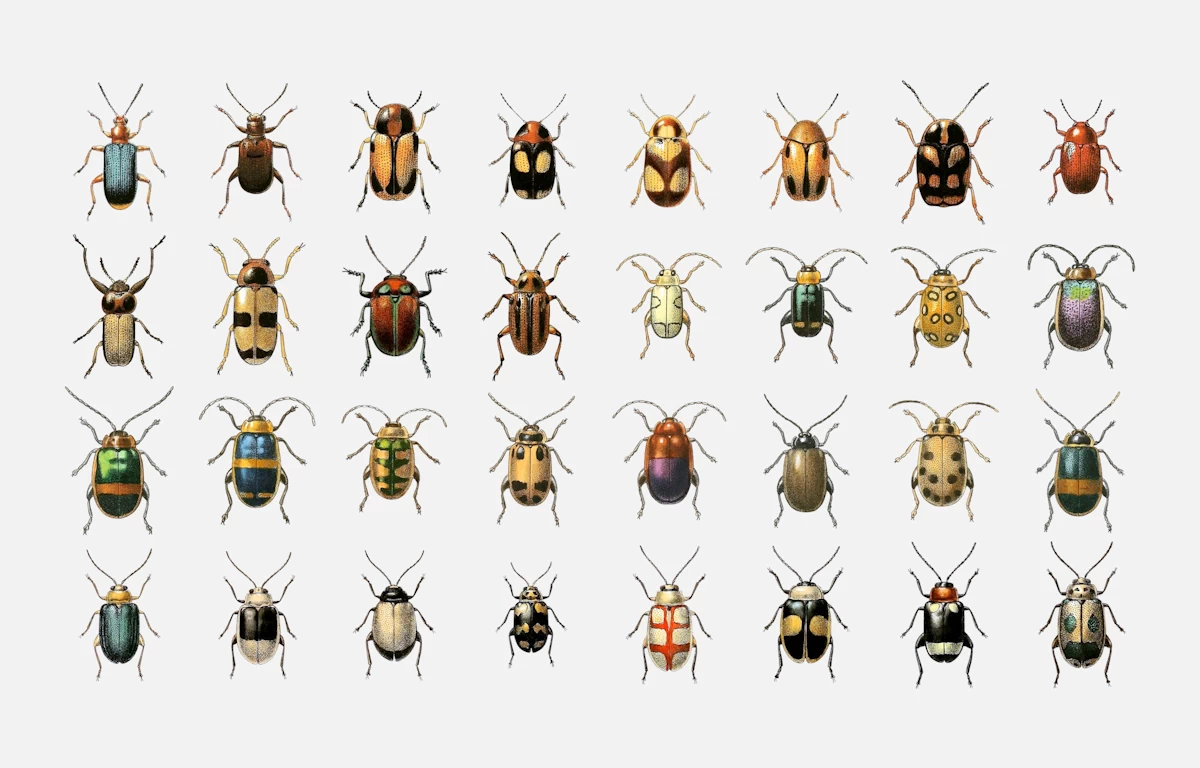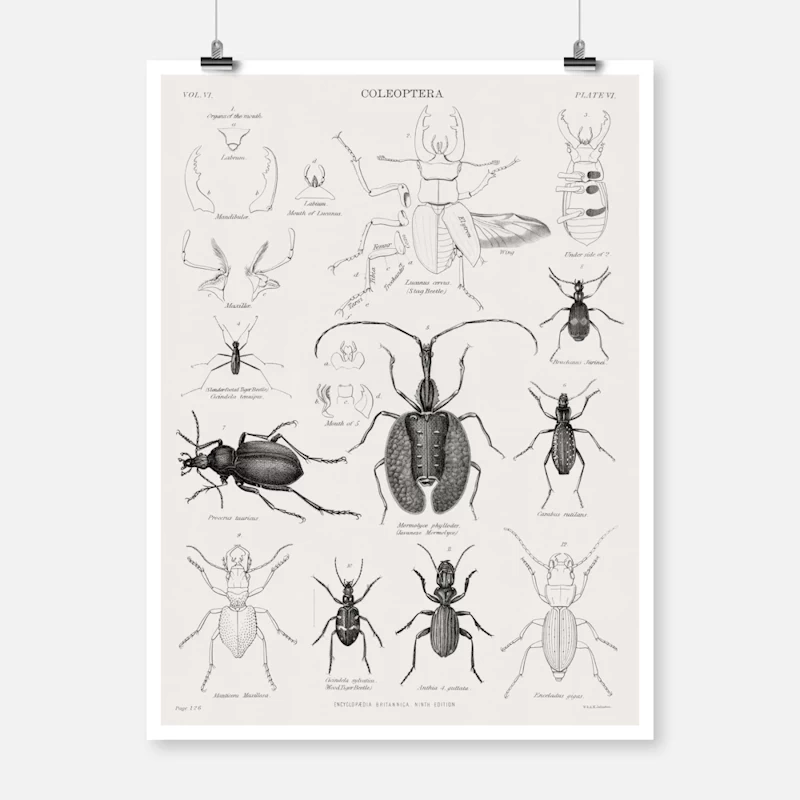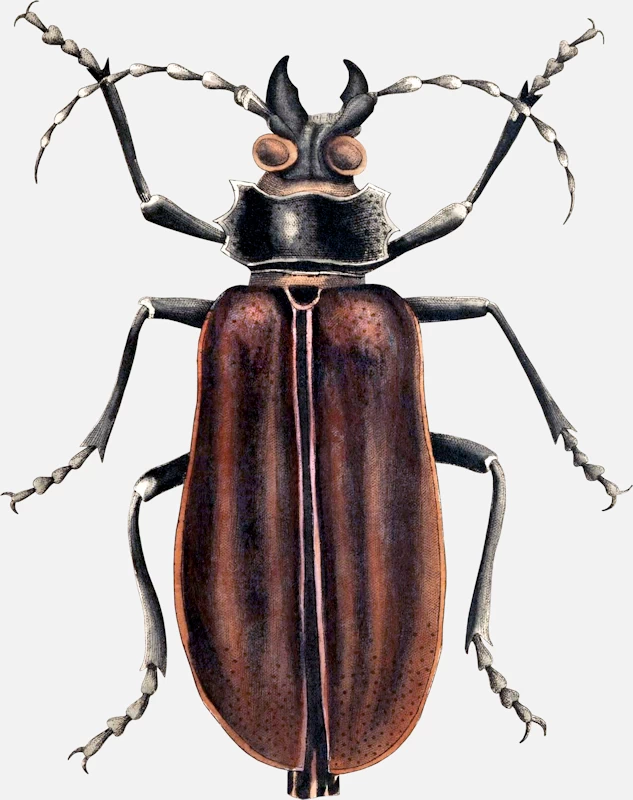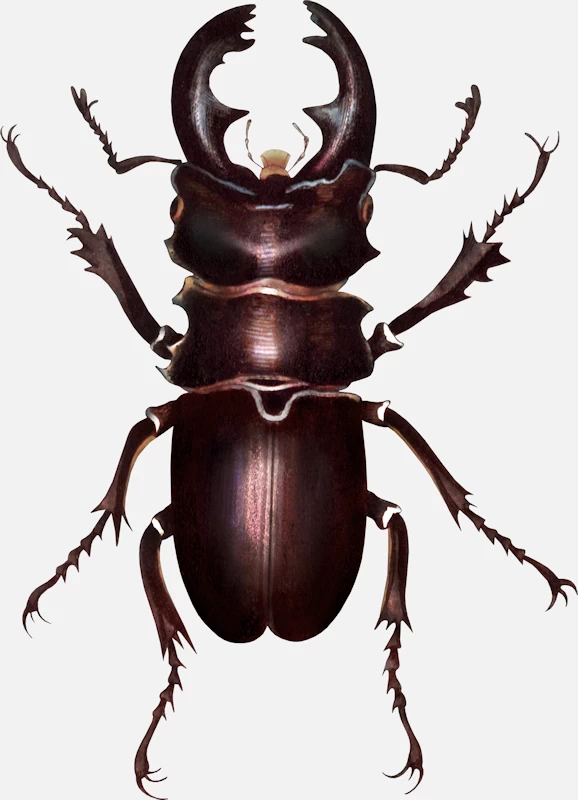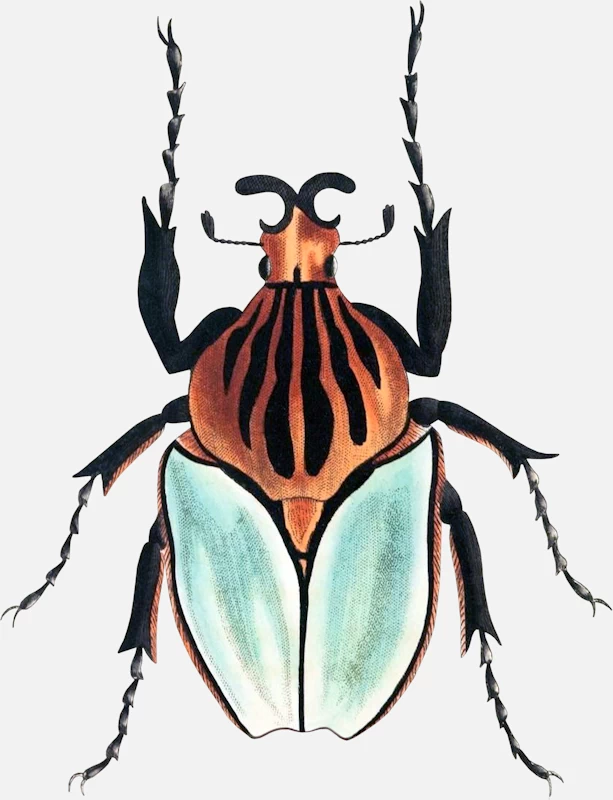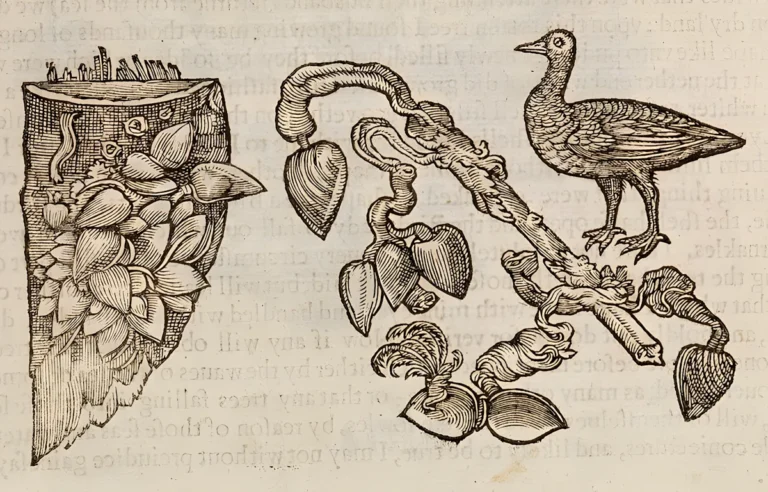Beetles of the Public Domain
Beetles are here to stay; we have them ready on display. We remove the backgrounds and the occasional stain, so enjoy these insect images of the public domain!
Beetles are a group of insects that belong to the order Coleoptera, the largest of all the insect orders, comprising nearly 400,000 described species. They are characterized by their hard exoskeletons and distinctive forewings, known as elytra, which cover and protect the hind wings and abdomen. Beetles are found in nearly every habitat on Earth, from the depths of tropical rainforests to the arid expanses of deserts. Among their vast diversity, certain beetles stand out due to their unique characteristics and ecological roles, including the titan beetle, stag beetles, and scarab beetles.
General Characteristics of Beetles
Beetles exhibit a wide range of physical and behavioral adaptations that enable them to thrive in diverse environments. They have a three-part body structure consisting of the head, thorax, and abdomen. The head houses their antennae, eyes, and mouthparts, which vary significantly among different species depending on their diet and lifestyle. Beetles possess chewing mouthparts, making them effective feeders on a variety of materials, including plants, other insects, and decaying organic matter.
The thorax is divided into three segments, each bearing a pair of legs. The first segment, the prothorax, is often shield-like and provides attachment for the first pair of legs and the elytra. The elytra are typically hard and serve as protective covers for the more delicate flight wings underneath. When beetles are not flying, their elytra meet in a straight line down their back, providing armor against predators and environmental hazards.
Beetles undergo complete metamorphosis, with life stages including egg, larva, pupa, and adult. This complex life cycle allows beetles to exploit different ecological niches at various stages of their development.
Titan Beetle (Titanus giganteus)
The titan beetle is one of the largest beetles in the world, with adults reaching lengths of up to 6.5 inches (16.7 cm). Native to the rainforests of South America, particularly the Amazon Basin, the titan beetle is a member of the family Cerambycidae, also known as longhorn beetles due to their long antennae.
Titan beetles are primarily nocturnal and are most often encountered during the rainy season when they are attracted to lights at night. Despite their intimidating size and robust mandibles, adult titan beetles do not feed. Their primary focus is on reproduction, and their large size is an adaptation to deter predators.
The larvae of titan beetles are believed to feed on decaying wood, although much about their larval stage remains a mystery due to the difficulty of studying these insects in their natural habitat. The powerful mandibles of adult titan beetles are capable of snapping pencils and even piercing human skin, a testament to their formidable strength.
Stag Beetles (Family Lucanidae)
Stag beetles are a group of beetles known for their large and distinctive mandibles, which resemble the antlers of a stag. These beetles are found worldwide, with a higher diversity in temperate and tropical regions. The male stag beetles use their mandibles in combat with other males to establish dominance and secure mates, often engaging in dramatic battles.
Stag beetles exhibit sexual dimorphism, with males typically being larger and more robust than females. The larvae of stag beetles, commonly known as grubs, develop in decaying wood and can take several years to mature, depending on environmental conditions.
One of the most well-known species of stag beetles is the European stag beetle (Lucanus cervus), which is the largest terrestrial insect in Europe. The males of this species can reach up to 3 inches (7.5 cm) in length, including their mandibles. Despite their fearsome appearance, stag beetles are generally harmless to humans.
Scarab Beetles (Family Scarabaeidae)
Scarab beetles are a diverse group of beetles that include dung beetles, flower chafers, and rhinoceros beetles. They are found worldwide and are particularly abundant in tropical regions. Scarab beetles play important ecological roles, particularly in nutrient cycling and soil aeration.
Dung beetles, for example, feed on animal feces and play a crucial role in decomposing and recycling organic matter. Some species roll dung into balls and bury them as a food source for their larvae, a behavior that has fascinated humans for centuries. The ancient Egyptians revered dung beetles, specifically the species Scarabaeus sacer, as symbols of rebirth and regeneration, associating them with the sun god Ra.
Rhinoceros beetles, another subgroup of scarab beetles, are known for the horn-like structures on the males’ heads. These horns are used in battles for mates and territory. Rhinoceros beetles are among the strongest animals on the planet relative to their size, capable of lifting objects 850 times their body weight.
Ecological and Cultural Significance
Beetles, including the titan beetle, stag beetles, and scarab beetles, are integral to many ecosystems. They contribute to the decomposition of organic matter, pollination of plants, and control of pest populations. Their diverse forms and behaviors have also made them subjects of cultural significance and scientific study.
In many cultures, beetles are considered symbols of strength, resilience, and transformation. The ancient Egyptians’ reverence for the scarab beetle is one of the most well-known examples of beetles’ cultural impact. In modern times, beetles continue to inspire researchers and enthusiasts who study their biology, behavior, and ecological roles.
Conservation and Threats
Despite their resilience, many beetle species face threats from habitat loss, climate change, and pollution. Deforestation and the destruction of natural habitats have particularly severe impacts on beetles that depend on specific environmental conditions for survival. Conservation efforts are essential to protect these remarkable insects and the ecosystems they support.
Programs aimed at preserving beetle habitats, such as protected areas and sustainable forestry practices, are crucial for their conservation. Public education and awareness about the ecological importance of beetles can also contribute to their protection.
Conclusion
Beetles are among the most diverse and fascinating groups of insects, with species like the titan beetle, stag beetles, and scarab beetles showcasing the incredible range of forms and behaviors within this order. Their ecological roles, cultural significance, and remarkable adaptations make them worthy of study and conservation. As we continue to explore and understand the natural world, beetles will undoubtedly remain a subject of intrigue and admiration.


